GUATEMALA - MAY 2008
May 9 - Rabinal

In Rabinal we visited the ICB Nueva Esperanza or the New Hope Foundation where we spoke with founder Jesús Tecú Osorio, a survivor of the Río Negro massacre and winner of the 1996 Reebok Human Rights Award valuing US$10000. With his winnings, Jesus founded and built this bilingual facility which currently houses 124 students; 70% are girls. The mandate of the school is to encourage collaboration (all work is done in mixed gender groups of four), troubleshooting, and develop community leaders. The curriculum includes science, math, technology, community service, language (Spanish and Achí), and communication. Topics covered include reading, agriculture, irrigation systems, and animal husbandry. Future expansion plans involve a school of nursing and a university expansion program.
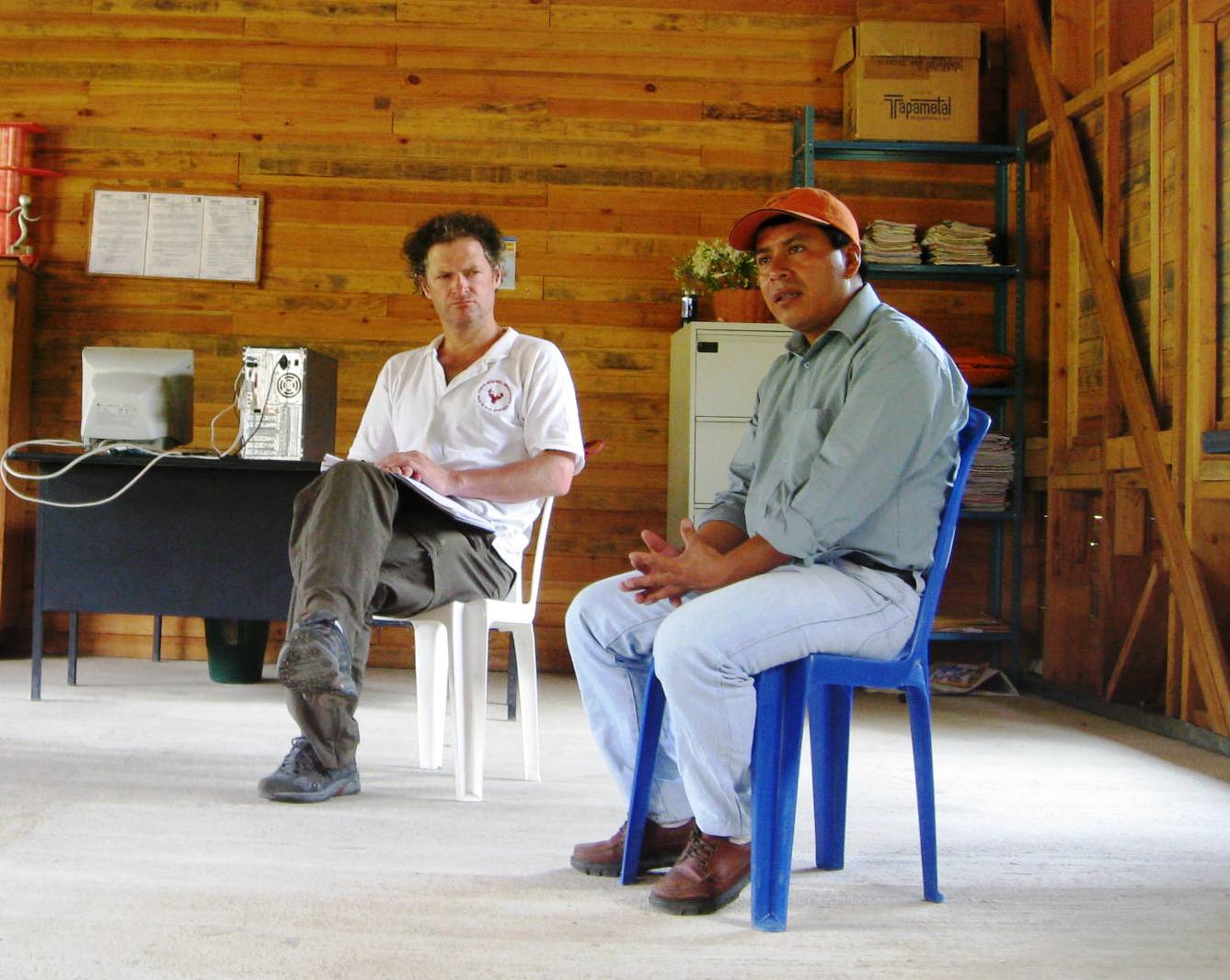
Jesus, involved since 1996 in legal proceedings seeking justice for victims of the armed conflict, discussed the inadequacy of the Guatemalan legal system.
Insignificant trial rates (only 3 cases out of 100), constant delays, and current political ties, promise little justice for rural Guatemalans.
Additionally, intellectual authors of the armed conflict evade criminal prosecution - Ríos Montt, army general and President of Guatemala (1982-1983),
accused with crimes against humanity, and masterminded the scorched earth policy, currently holds a seat in Congress. A true humanitarian, Jesus now
aids the community of Xococ, who carried out the massacre on Río Negro villagers, with their land rights claims.
(Photo credit: Catherine Nolin)

Institute Director Walda Perdomo provided a tour of the grounds.
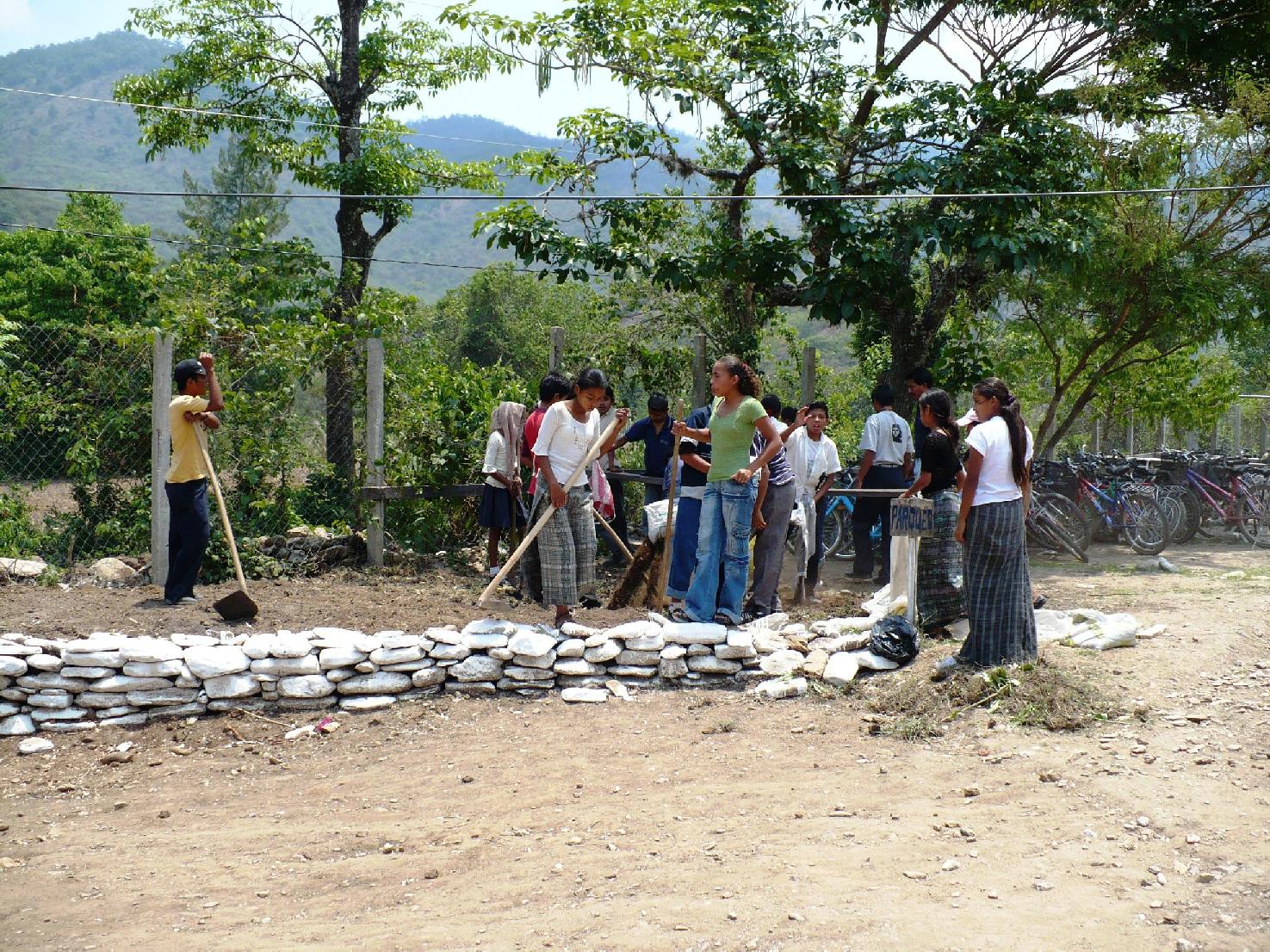
Students loosen the soil to expand the garden.

Animal husbandry involves the care of cattle ...

... chickens, and turkeys.

Ecology of the region transition from arid scrub to pine dominated cloud forests in higher elevations.

A beautiful collage created by the students.
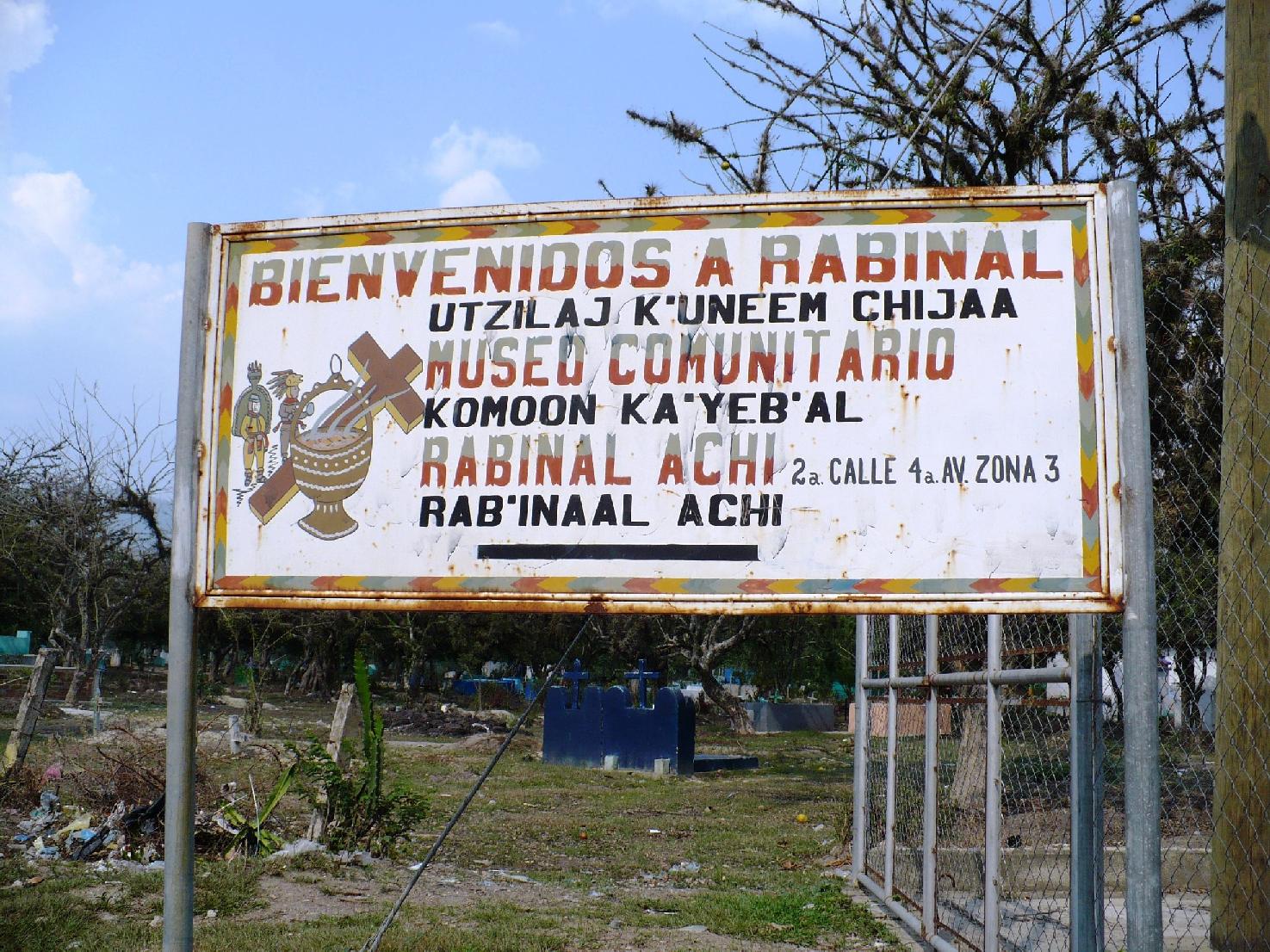
The afternoon brought us to the Rabinal community cemetery where we viewed the massacre monuments which honour the numerous victims of the conflict. For me, these monuments extended a feeling of serenity and peace, but also sadness and sickness knowing the extreme violence that these victims and their surviving families experienced.

PACUX community building: "The voice of the grandchildren and children will never forget the terror."
Monument Alley
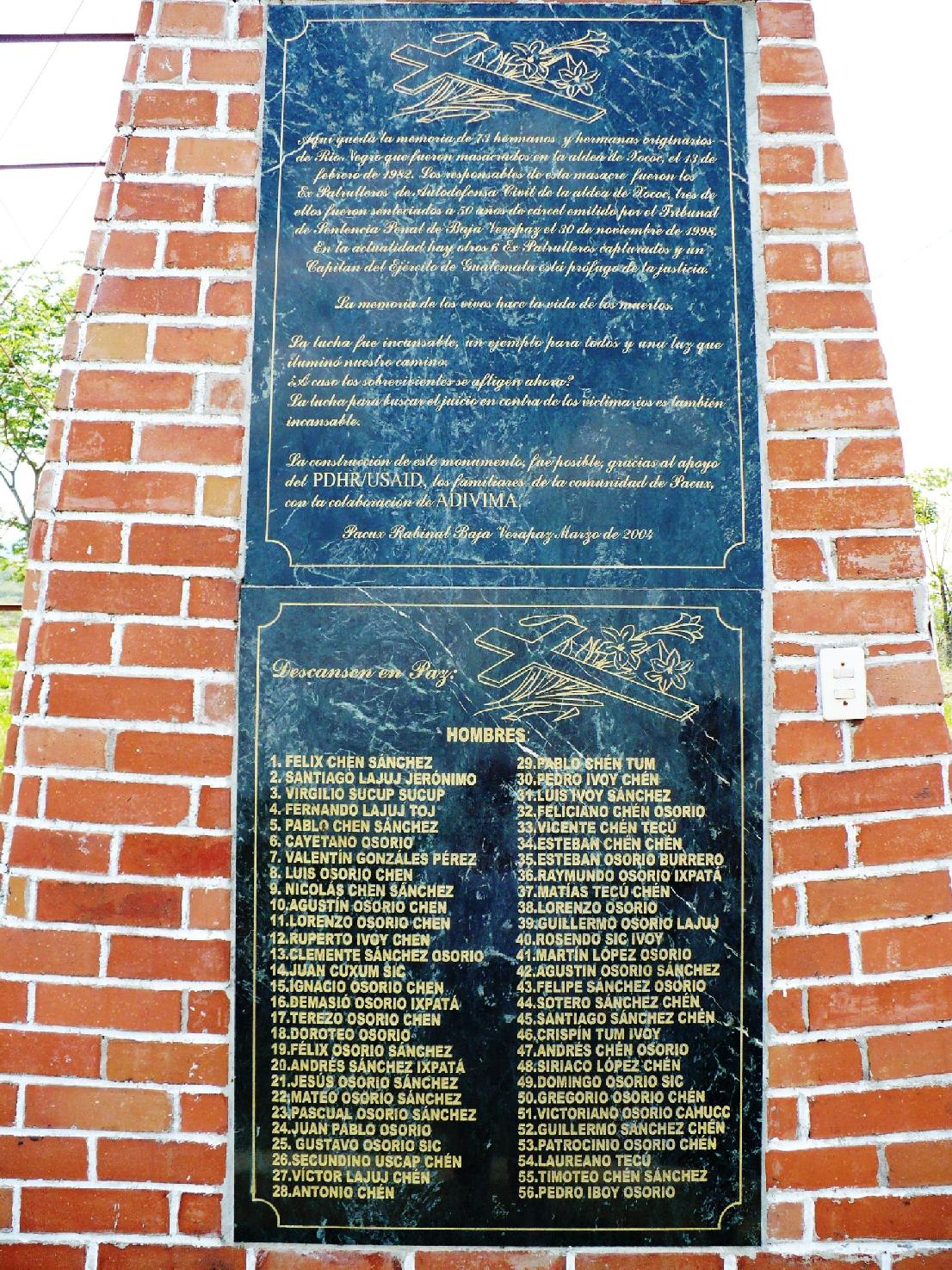
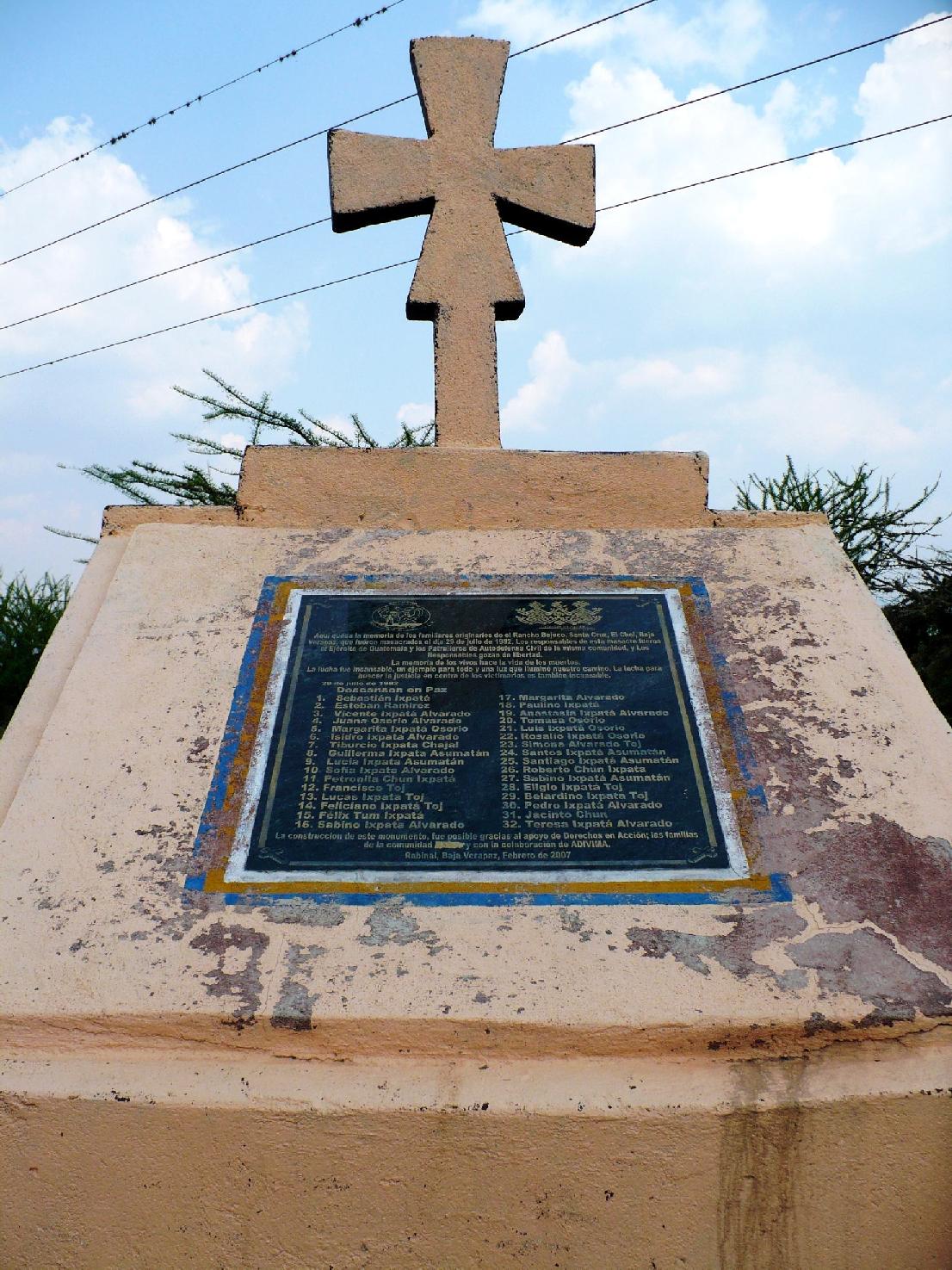
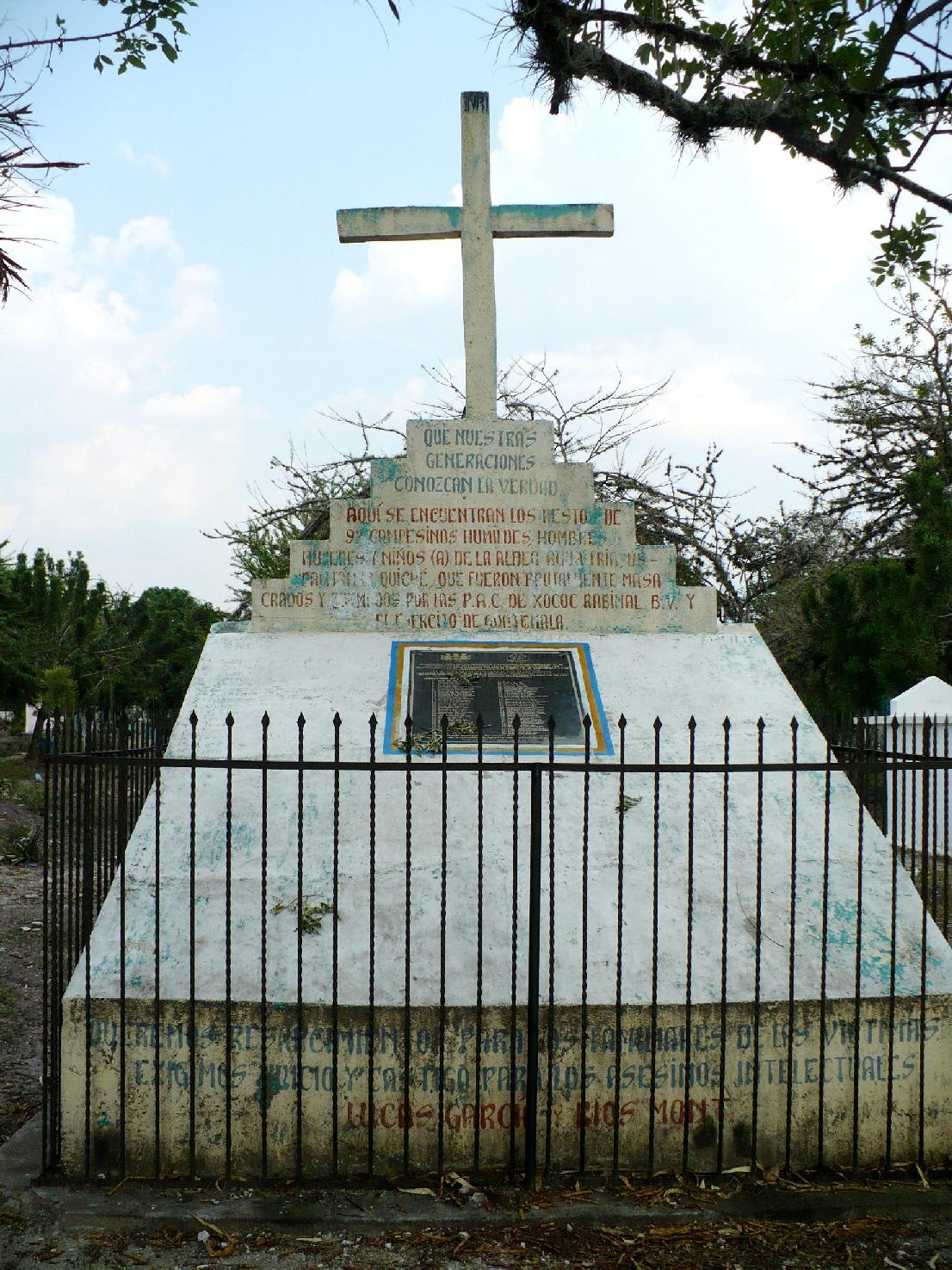
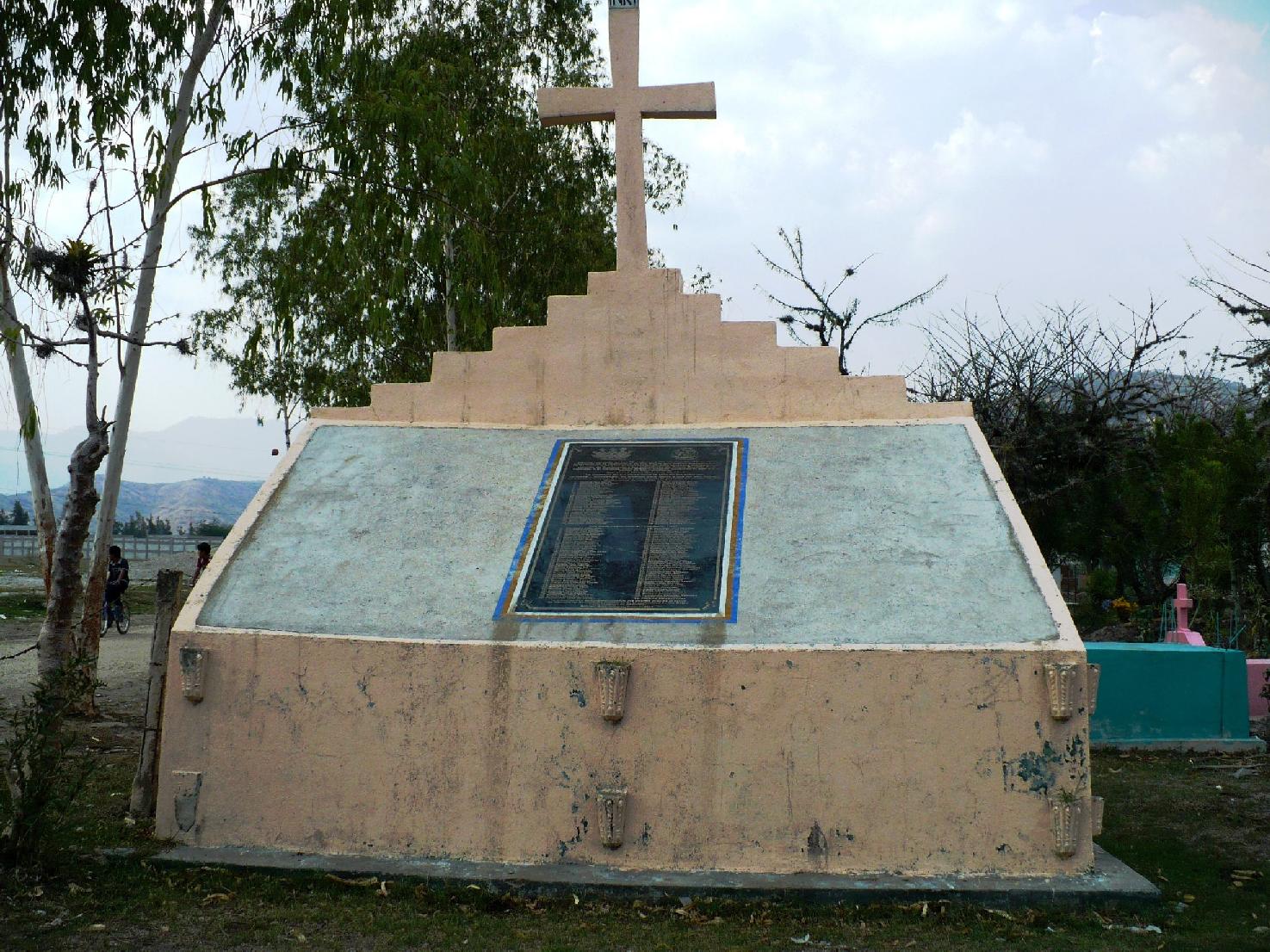

Our driver, Nickko. When I took this photo, I was wondering what Nickko was thinking. How was this trip impacting him? How was he and his family impacted by the armed conflict, if at all? I really wished that I spoke Spanish and could have asked him these questions and understand his past.

The disturbed ground in this photo marks the location of recent burials of victims returned following the FAFG identification process.
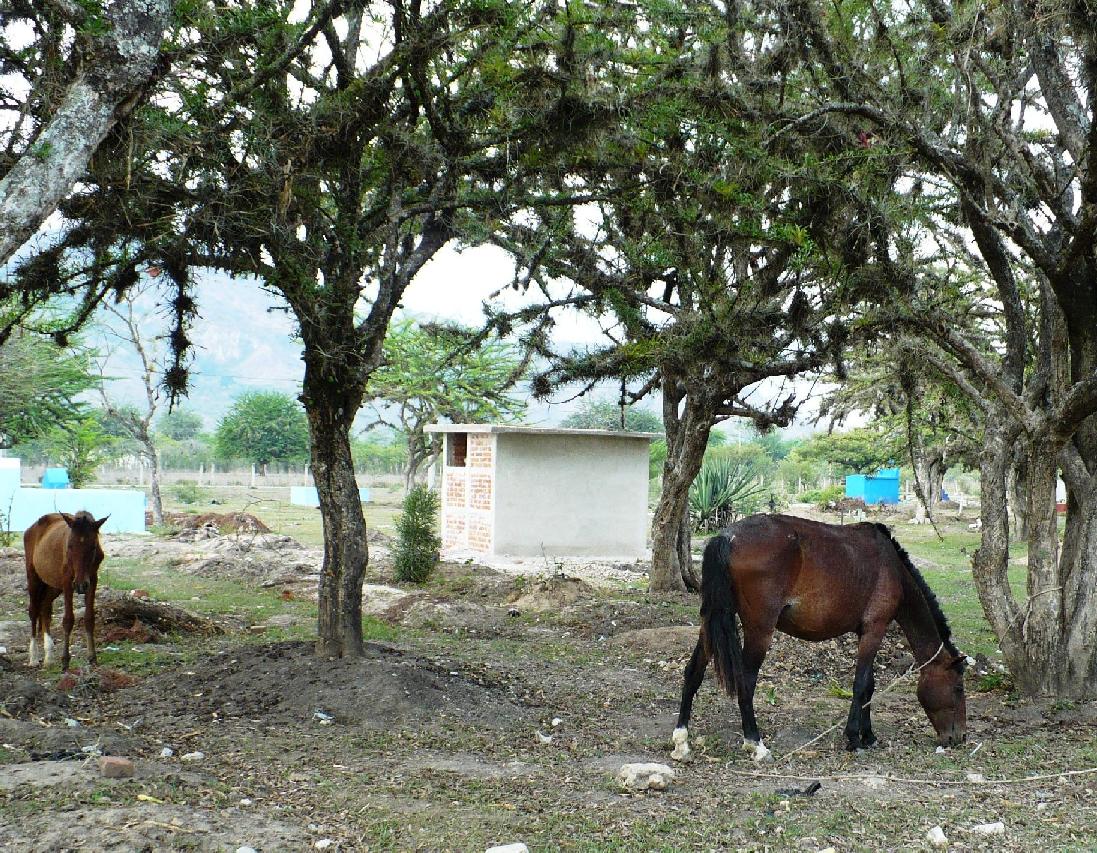
Land is so limited for indigenous campesinos that every parcel is utilized for their livelihood. I found this issue to be really surprising, as I had never experienced this degree of scarcity of space, especially coming from Canada. I was always surprised seeing livestock tied to the side of highways to take advantage of the vegetation growing on the curb.

A visit to the Rabinal Achí Community Museum where the mini-holocaust museum, like the names on the monuments, provided an overwhelming realization of the human lives that were taken.
Putting faces to the names...

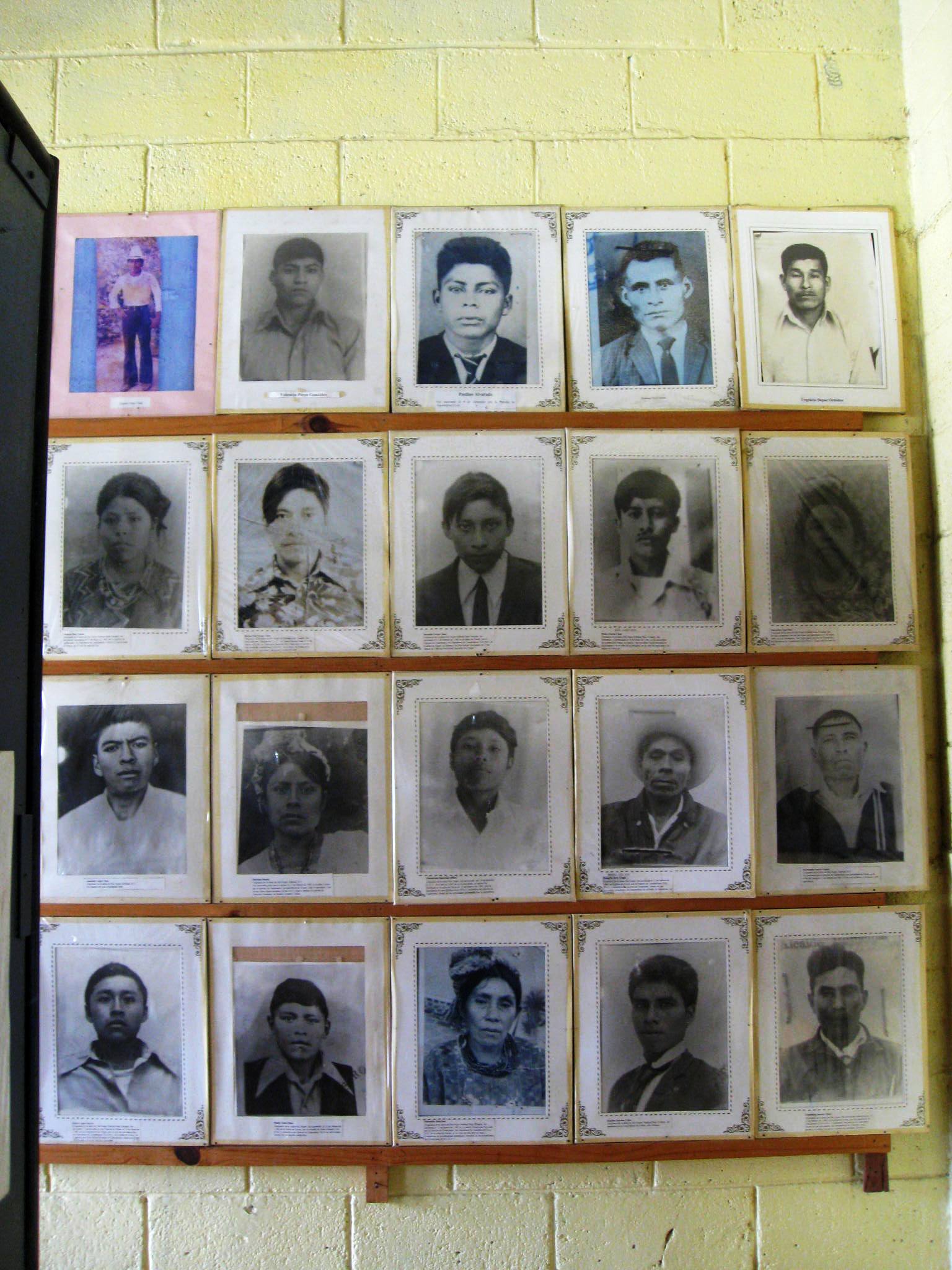
(Photo credit: Catherine Nolin)
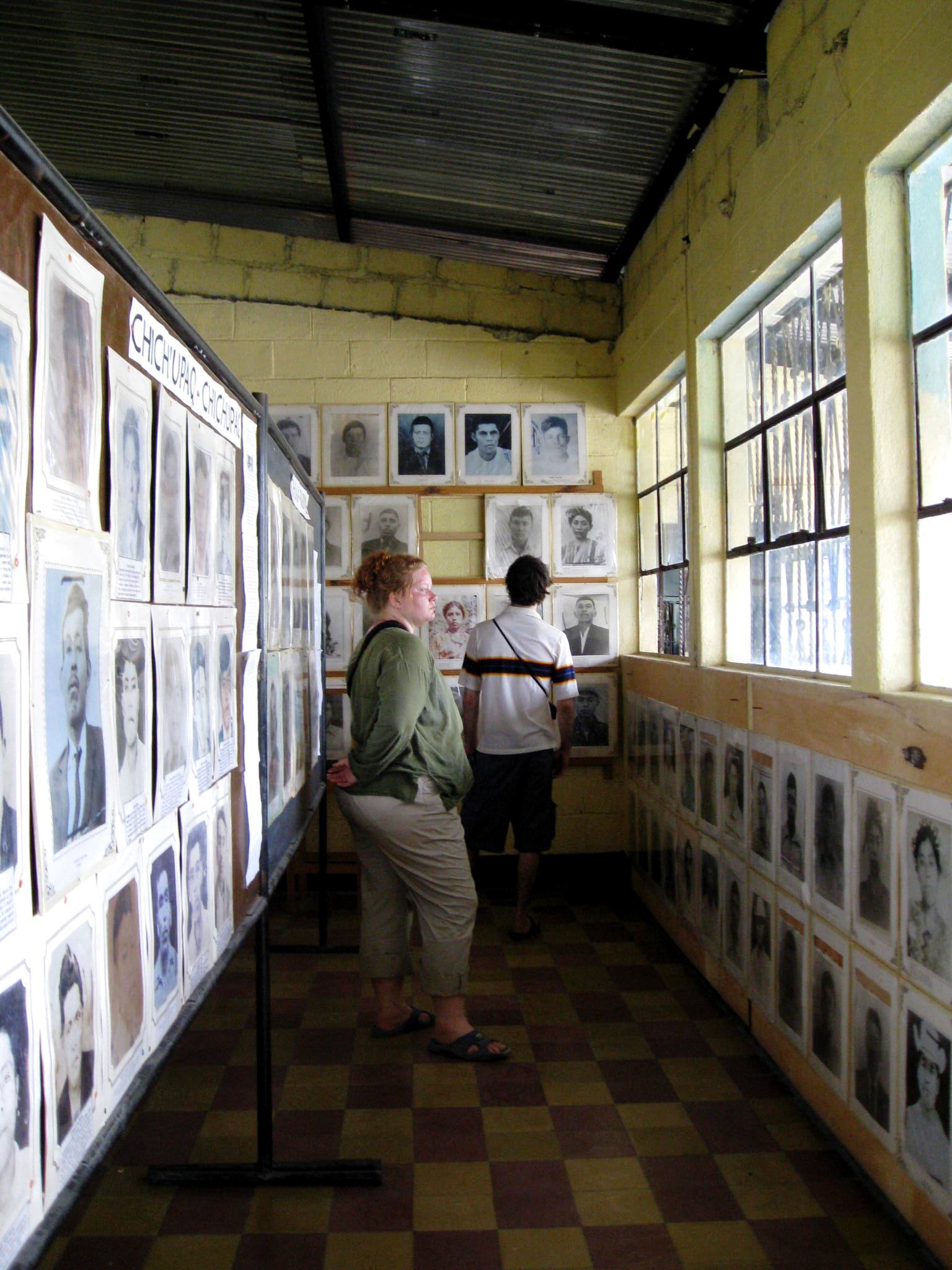
(Photo credit: Catherine Nolin)
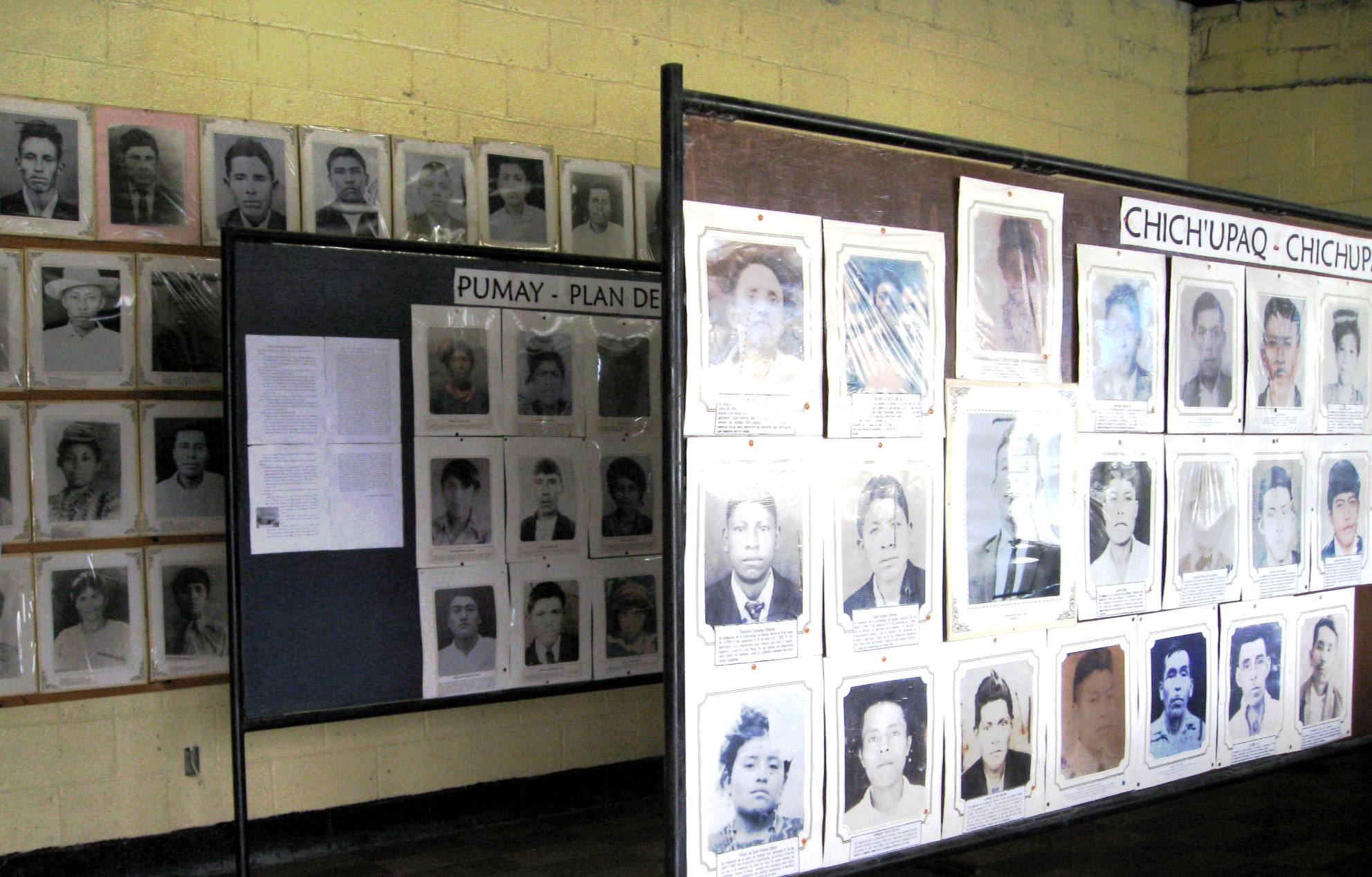
(Photo credit: Catherine Nolin)

A contrast to the surrounding images, this woman's exuberant joy captures better times in the lives of Guatemalans and stands testament to their continued hope.
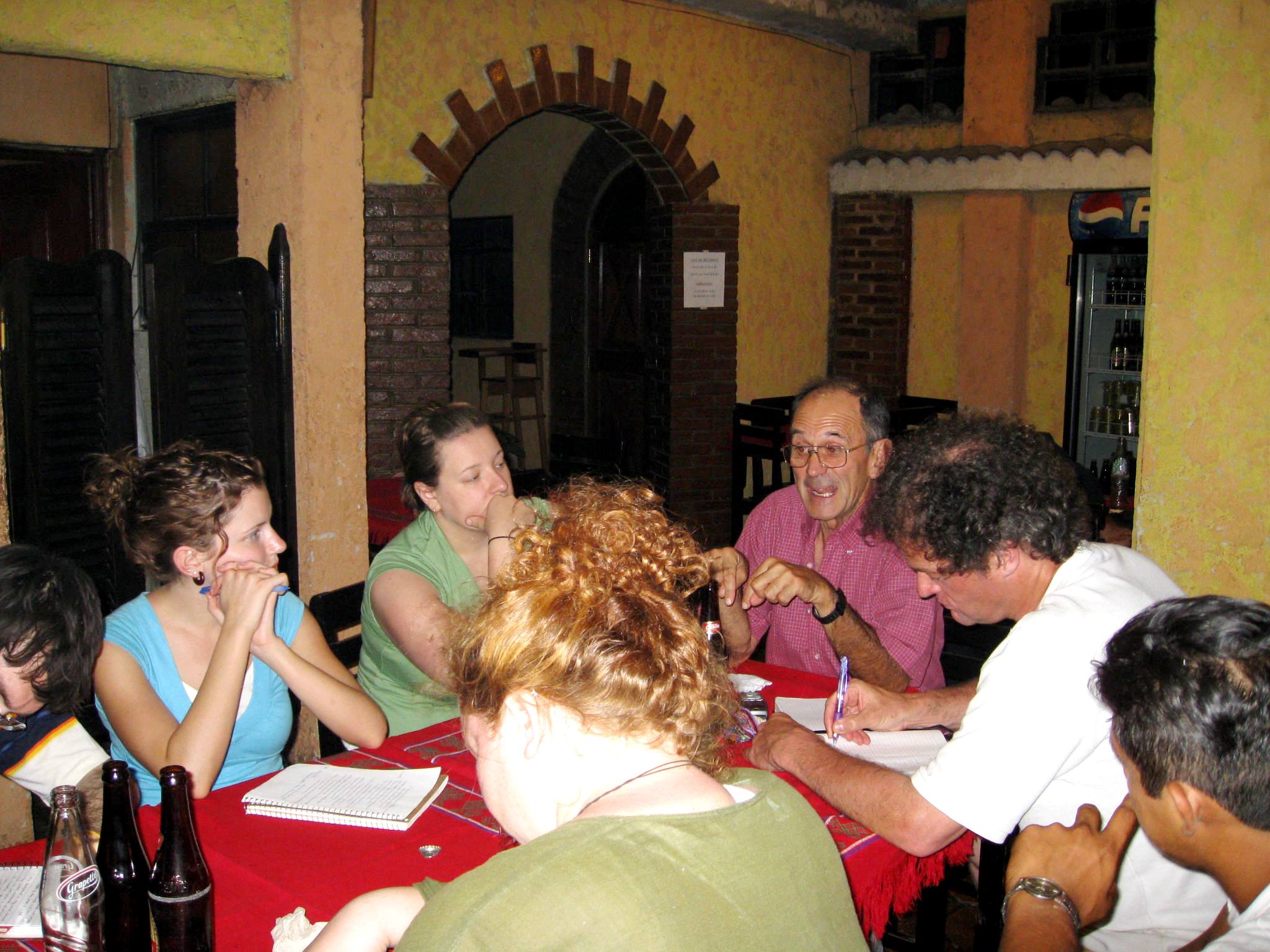
That evening, Fernando Suazo, a former Dominican-Catholic priest, fluent in the Achí language,
met with us to discuss his experiences over the last 24 years living with the Achí community, his role in the
Catholic church's REHMI project, femicide and violence against women, racism, discrimination, and human
rights issues. "What I've learned has changed my outlook on the world. I've found utter and total silence, fear,
pain, and suffering that remained unspoken." Fernando Suazo said that with time and trust, people began braking their silence and sharing their most
perverse stories of the violence. Through speaking and sharing the violent past, the victims began their road of grieving, acceptance, healing and moving forward.
(Photo credit: Catherine Nolin)
